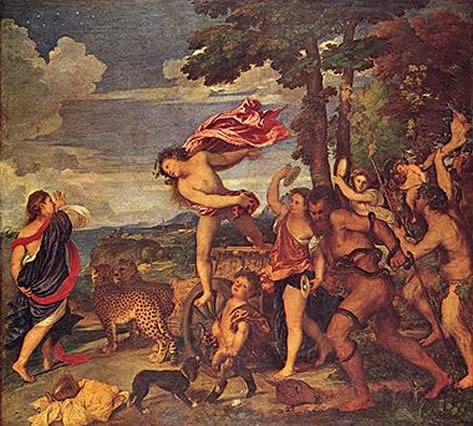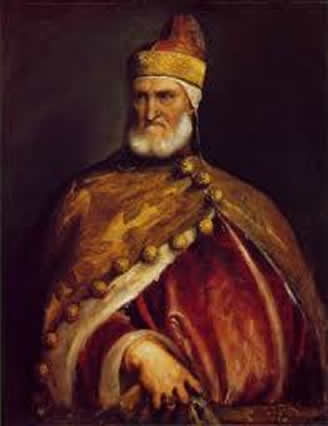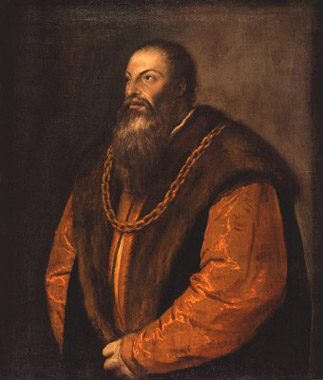The 16th Century saw the zenith of the Republic of Venice’s splendour.
Having survived the crisis of 1509 (the War of Aggression with the Holy League), the Serenissima proudly demonstrated its strength by commissioning new amazing architectural feats and the appearance of a great scuola of painting, started by Giovanni Bellini and continued by Giorgione, Tiziano , Lorenzo Lotto.
Other great masters appeared on the Venetian scene in the mid 1500s: Tintoretto and Paolo Veronese.
In 1523 Andrea Gritti was elected Doge . Thanks to his "Renovatio Urbis" to give the city a face-lift, the image of Venice underwent a veritable revolution, mainly due to the work of the Tuscan architect Jacopo Tatti, known as Sansovino. The owners of the palazzi opened up their drawing rooms for "ragunate": gatherings of artists, politicians and intellectuals, music and song, politics and art. Tiziano entertained his friends in the beautiful garden of his house (Casa dei Biri), on the shores of the lagoon at San Cancian (now Fondamenta Nove).
A letter by Priscianese, one of Titian’s scholarly Latinist friends, describes Ferragosto (15th August) in the Master’s house. The guests were Jacopo Sansovino, Pietro Aretino (a Tuscan poet called "the Scourge of princes") and Peter Nardi (a Florentine historian). Although the beautiful garden was full of shade, in the afternoon the strength of the sun could still be felt and so these four and Titian passed the time contemplating the masterpieces of the Master inside his house. From dusk to almost midnight they were entranced by "a thousand gondolas full of beautiful women and different harmonies" that enlivened their evening meal of exquisite food.
Titian was the leading figure of Venetian in the 1500s. A certain brightness can be seen in his later works, recalling other unknown worlds, messages that transfigure the very meaning of the images.
Another great protagonist of the learned conversations during these \n\nThis file was not retrieved by Teleport Pro, because the server reports that this file cannot be found. \n\nDo you want to open it from the server?'))window.location='http://www.venicethefuture.com/schede/uk/>
Titian was the leading figure of Venetian in the 1500s. A certain brightness can be seen in his later works, recalling other unknown worlds, messages that transfigure the very meaning of the images.
Another great protagonist of the learned conversations during these'" tppabs="http://www.venicethefuture.com/schede/uk/>
Titian was the leading figure of Venetian in the 1500s. A certain brightness can be seen in his later works, recalling other unknown worlds, messages that transfigure the very meaning of the images.
Another great protagonist of the learned conversations during these"ragunate" (meetings) was Andrea Palladio , the most ingenious Venetian architect in the 16th Century. There are only a few works by this Paduan in Venice, but all are important. The way Palladio played with forms and architectural details works is quite brilliant and the light and colour are extraordinary. Light reveals the interior of the church of Chiesa di San Giorgio Maggiore with magical intensity, while its white facade and dome blend in with the waters of St. Mark’s Basin.
The façade of the
Redentore is rendered sweet and charming by the light white marble, topped by the great dome flanked by two small bell towers. In 1581 Francesco Sansovino described Venice as a truly unique and safe place, full of peace and tranquillity. For this reason, there’s no other place in the world where man can feel himself the architect of his own fortune and dignity.
Michelangelo Mandich











